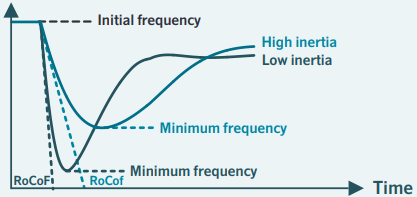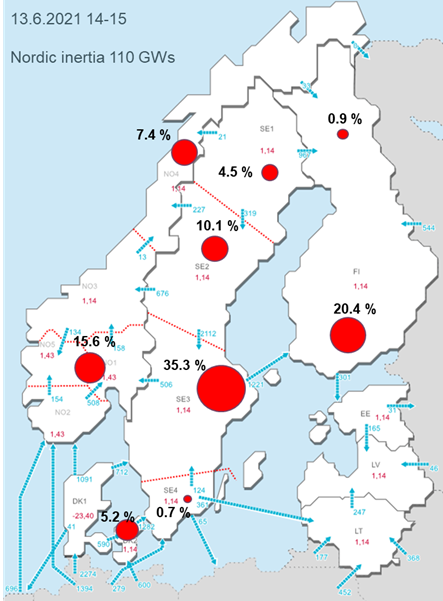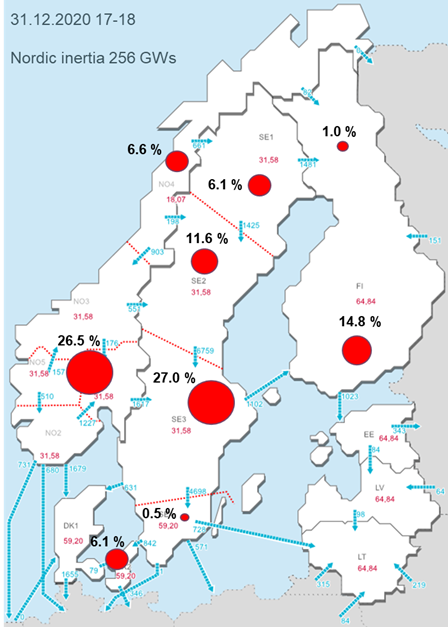Inertia of the Nordic power system
Inertia is the ability of a power system to oppose changes in frequency due to resistance provided by the kinetic energy of rotating masses connected to the system. During times of low inertia, large sudden power imbalance, for example due to a sudden disconnection of a large production unit, causes large instantaneous frequency deviation. Whereas during times of high inertia, the instantaneous frequency deviation is small.

The Nordic transmission system operators estimate the kinetic energy of the Nordic power system (Finland, Sweden, Norway, eastern Denmark) using modelling data and real-time telemetry of individual generators.
The data represents the total kinetic energy of the Nordic power system as the behavior of frequency is primarily influenced by the total kinetic energy of the system. The kinetic energy of the Nordic power system typically varies between 120 GWs and 280 GWs. In low inertia situations, the Nordic TSOs procure Fast Frequency Reserve to prevent the instantaneous frequency deviation becoming too large.
More information on inertia is available in the Fingrid magazine.
The figures below show the distribution of the Nordic power system inertia during a low inertia situation on 13 June 2021 at 14-15 and a high inertia situation on 31 December 2020 at 17-18.


Details
Minna Laasonen
Senior Expert
tel. +358 30 395 5293
Mikko Kuivaniemi
Expert
tel. +358 30 395 5188
